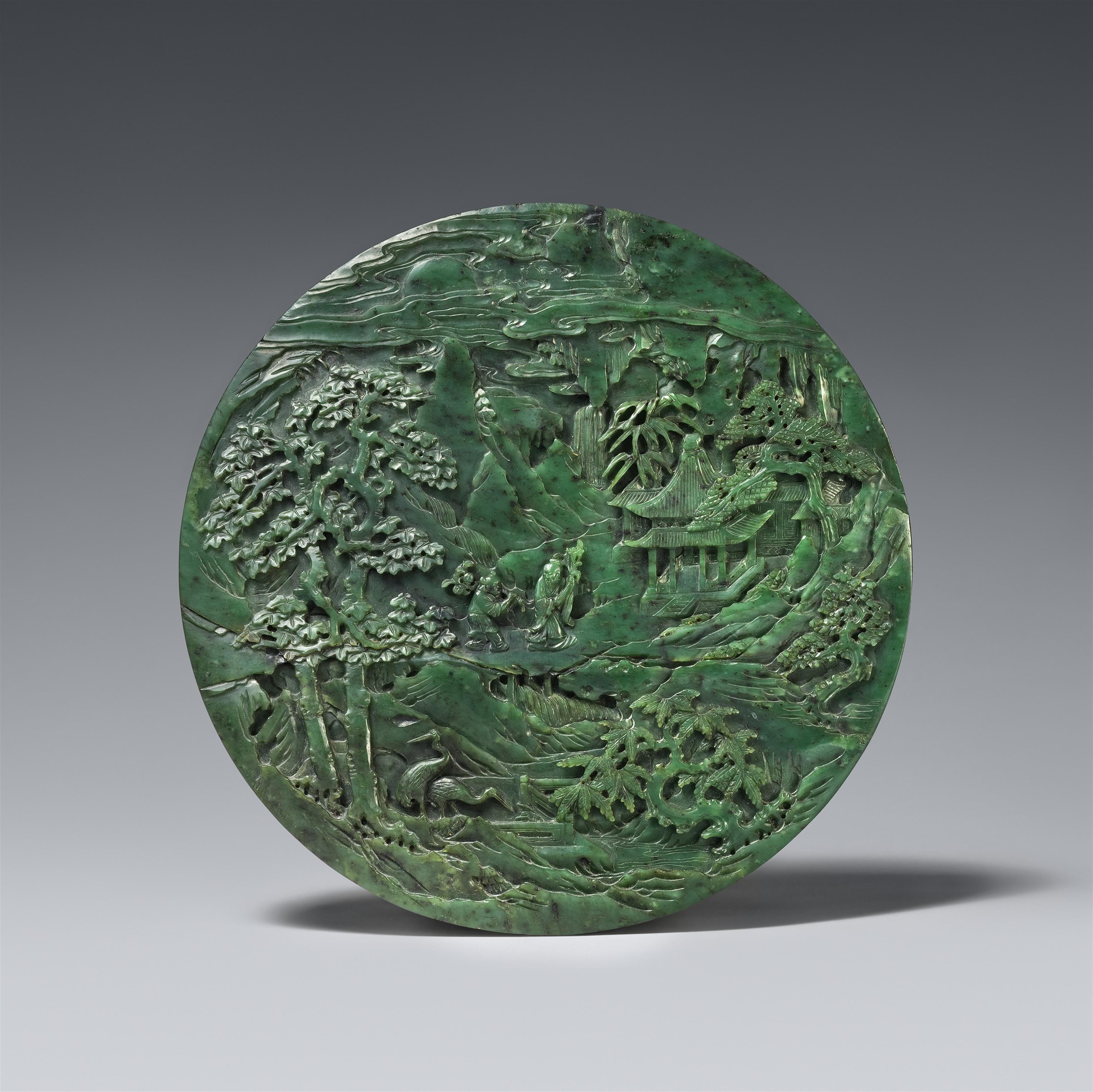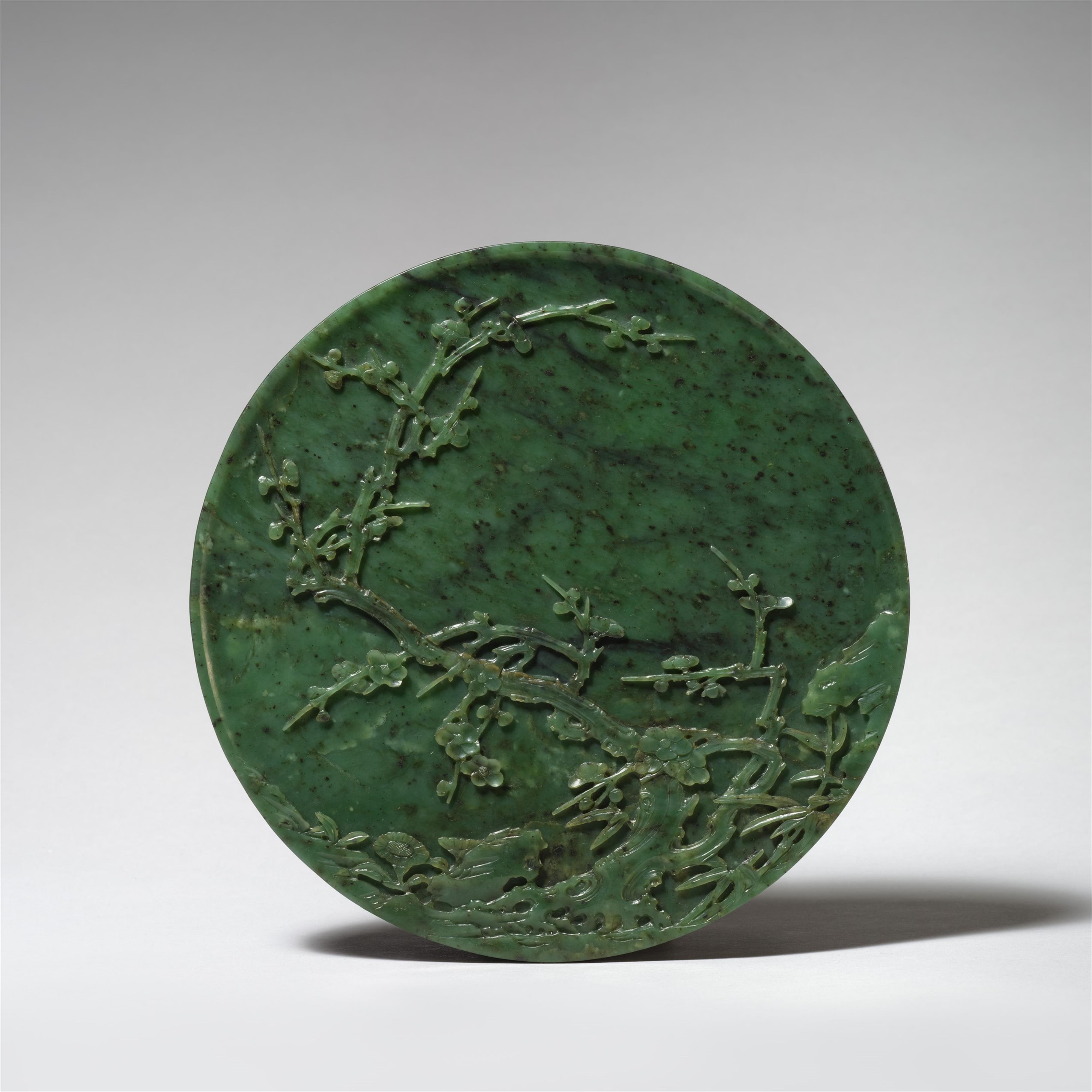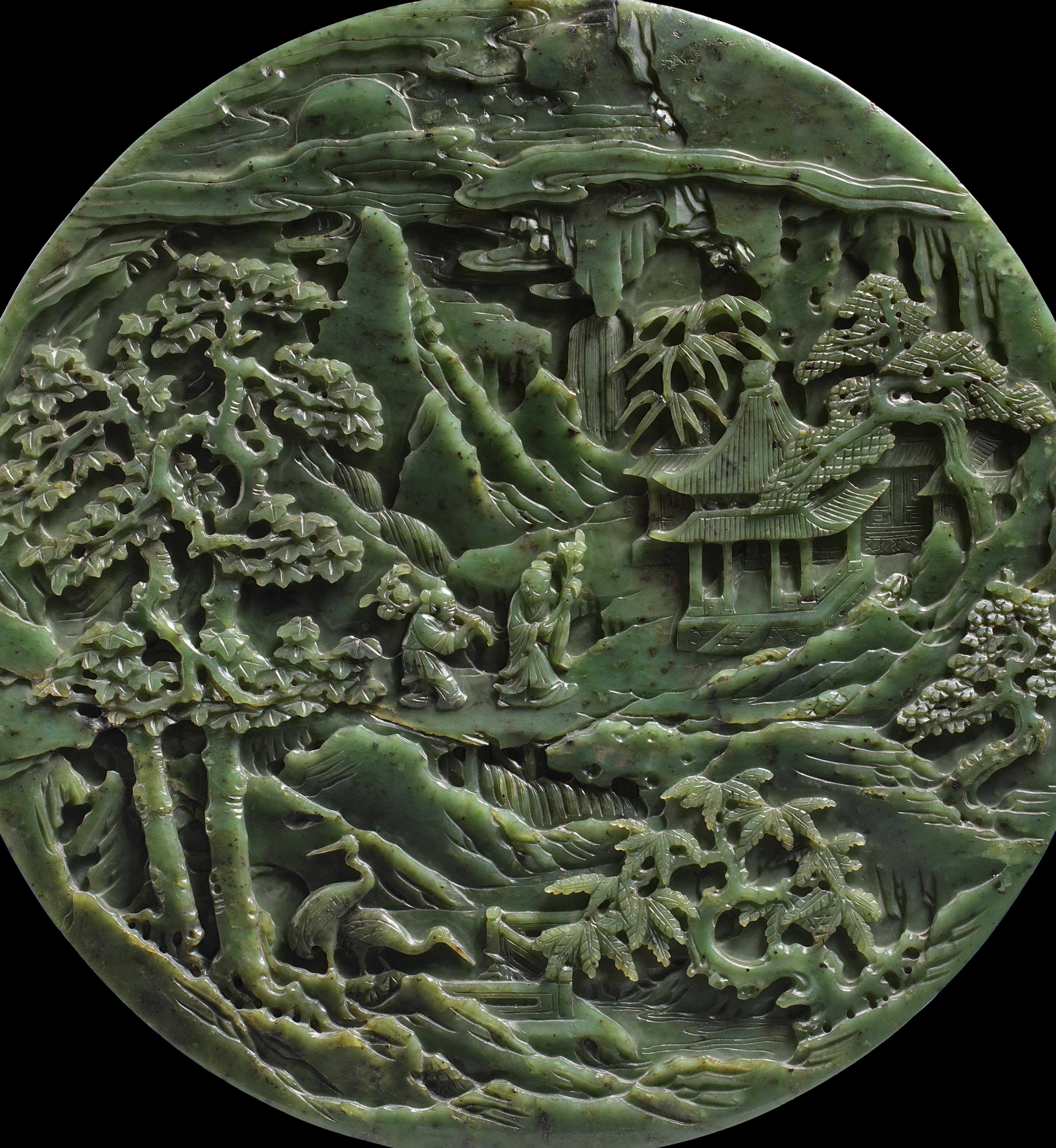A spinach-green jade double-sided circular plaque for a screen. Second half 18th/early 19th century
In a rocky mountain landscape with a waterfall that changes into a rushing stream, a scholar with an iris branch and a servant shouldering a peach branch cross a bridge towards a pavilion in the center of the picture. In the foreground, two cranes standing on a terrace. The landscape features a variety of trees, an old willow with a gnarled trunk grows by the river, two adjacent wutong trees tower high into the sky, the pavilion is surrounded by bamboo and a pine tree whose needles appear as rhombuses through diagonal lines. A stellar constellation is depicted next to a full moon with swaths of clouds passing by. The reverse is carved with plum blossom branches.
Diameter 25 cm; depth 1.4 cm
Round or square jade plaques were numerously carved in the time of Emperor Qianlong, especially in the decades between 1770 and 1820. The green or white jade plaques were usually produced as a pair. They have a diameter of between 20 and 25 cm and their thickness is around one cm. In elaborately carved stands, they were usually placed on tables in the imperial halls of the Forbidden City or the Old Summer Palace Yuanmingyuan.
The Qianlong emperor advocated that jade mountains and carved panels should carry the spirit of paintings by famous past masters. It is recorded that a number of classical paintings from the emperor's own collection was ordered to be reproduced in jade.
The multi-layered mountain landscapes allude to a scholar’s retreat. Deep in the mountains, a flower lover and his servant walk towards a dwelling. The pair of cranes could be a reference to the poet Lin Bu (967-1028), who kept cranes in his mountain dwelling. In contrast to the other plaques, there are no overt symbols of longevity such as Shoulao, deer and lingzhi on the present piece. Only the peaches on a branch carried by the boy servant can be interpreted in this direction.
十八/十九世紀 碧玉雙面刻觀賞圓屏
一面為圓月山中人物野鶴圖, 一面為梅枝假山圖。
來源: 源自一位1900年移居澳大利亞的德國工程師,其在那里建造了用於分離弱磁性礦石的處理廠。 這一拍品可能為其於1905年至1930年在歐洲與澳大利亞往返期間獲得。 不排除原為他來自倫敦附近Wandsworth的妻子之嫁妝的可能性。 自那時起這一拍品在家族中傳承至今。
乾隆皇帝時期,特別是在1770年至1820年期間,圓形或方形的白玉、碧玉插屏經常以一對的形式被製作出來。它們的直徑大都在20至25厘米之間,厚約1厘米。它們被放置在精心雕琢的支架上,成對地出現在紫禁城或圓明園老夏宮的皇室大廳內。
除卻對與古玉的偏愛之外,乾隆皇帝認為玉屏、玉山雕刻應該表現出歷史上著名畫家的繪畫神韻。眾所周知,乾隆皇帝會讓匠人把他收藏的著名畫作雕刻在玉石上,所用的正是來自於闐的扁平玉石。
這些玉雕上層次分明的重山景觀作了文人隱世的暗喻。這件拍品展示了一位愛花之人和他的僕從在深山中走向他們的住所。一對仙鶴可能源於詩人林逋 (967–1028) 的典故,林逋在他的山中住宅中飼養仙鶴。與其他玉雕插屏不同的是,這件作品沒有壽星、鹿以及靈芝等長壽圖案。 只有年輕侍從肩上的桃枝可以表達相近的含義。
Provenance
Former property of a German engineer who traveled to Australia in 1900, where he built processing plants for the separation of weak magnetic ores. The jade plaque was probably acquired in the period between 1905 and 1930, when he commuted between Europe and Australia. It is also possible that his wife from Wandsworth near London brought the plaque into the marriage. The jade has been in the family possession ever since.






